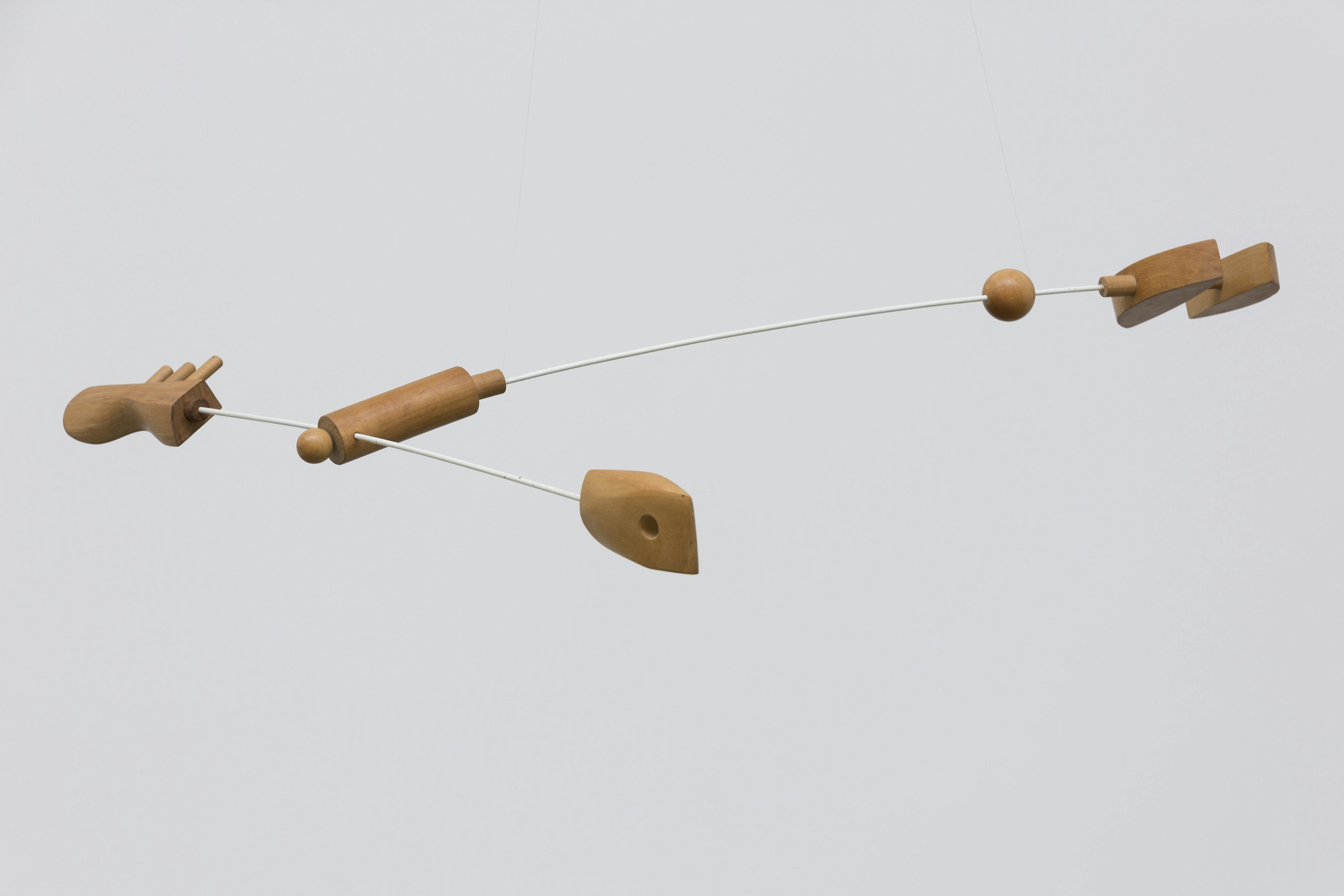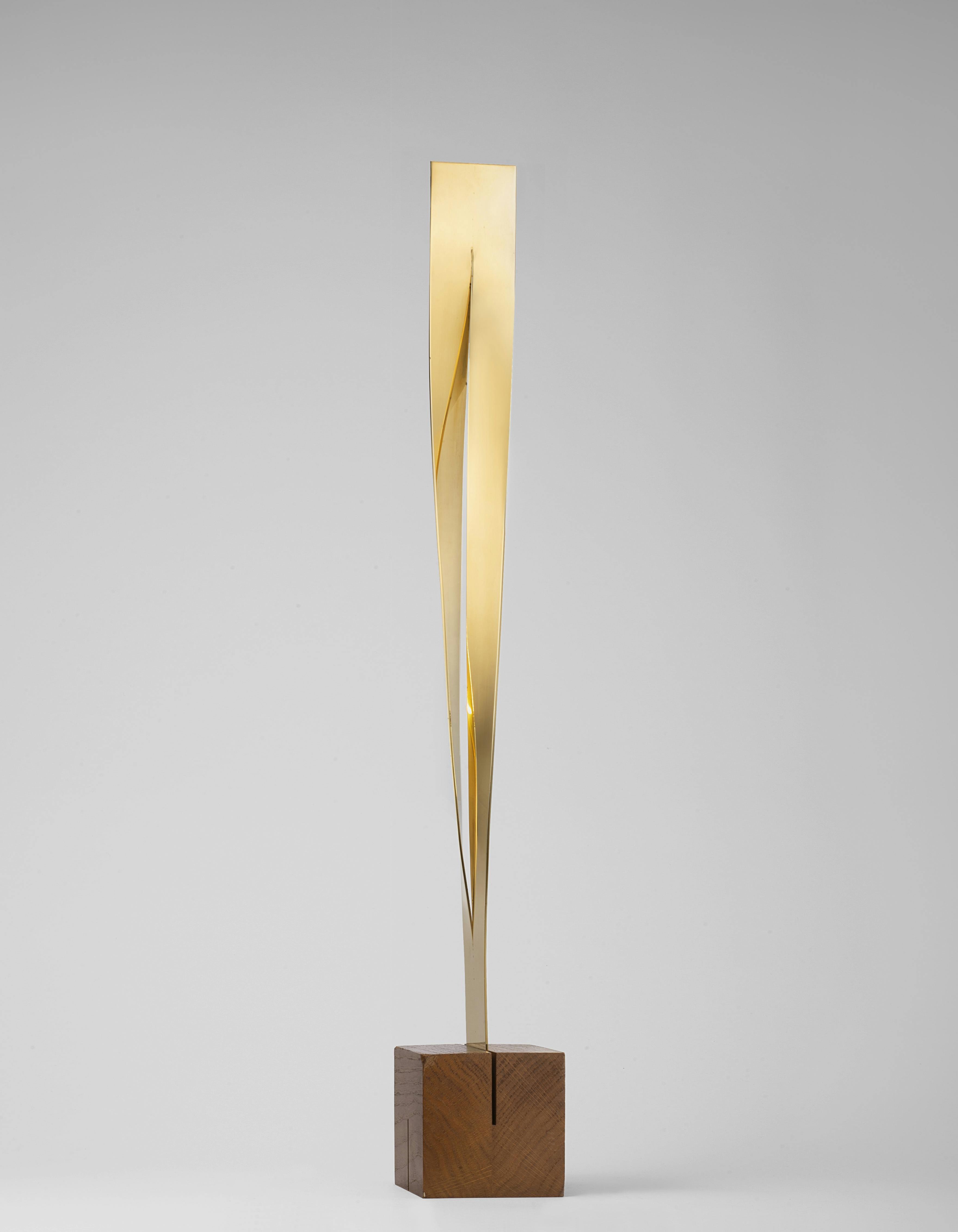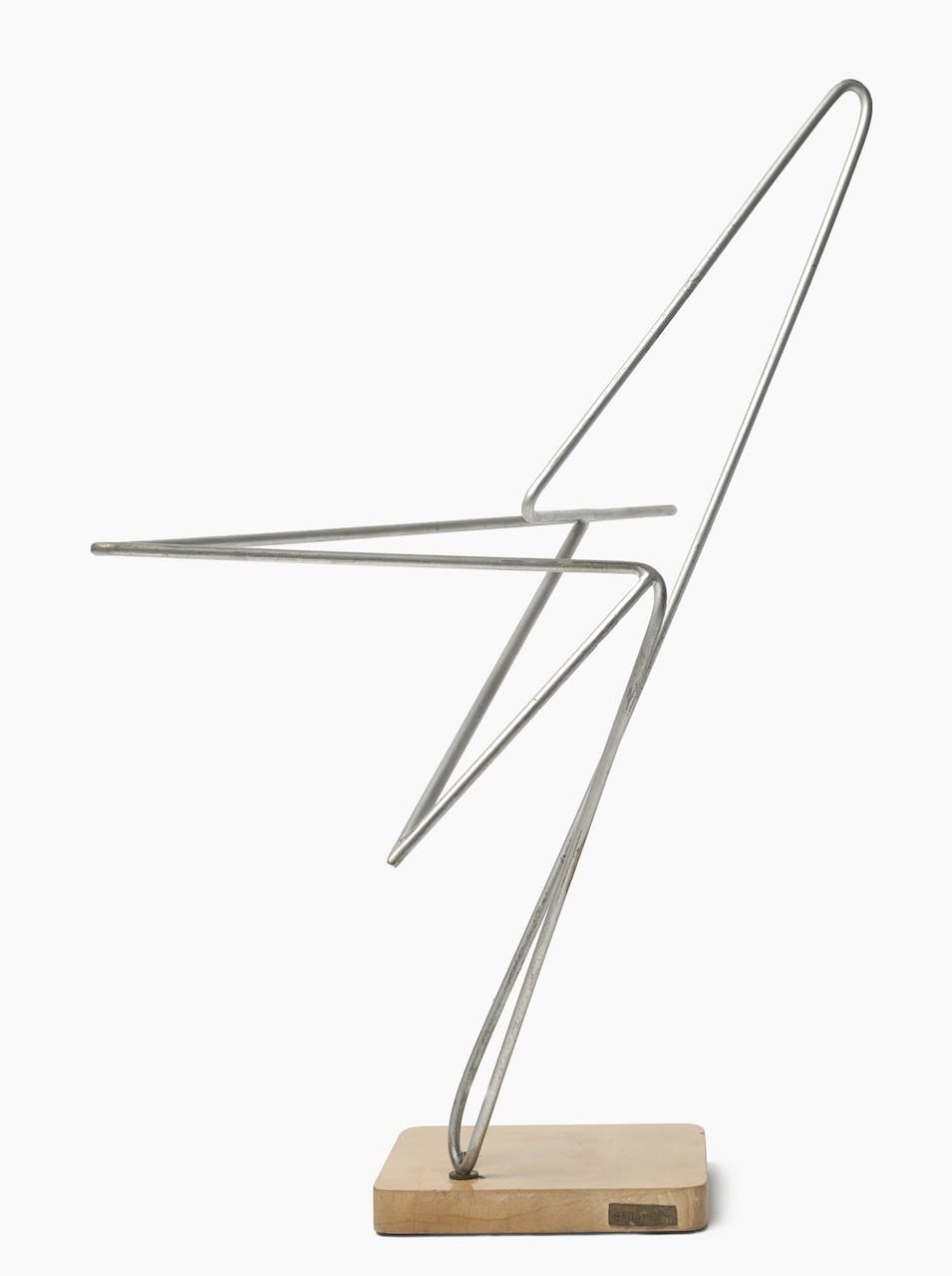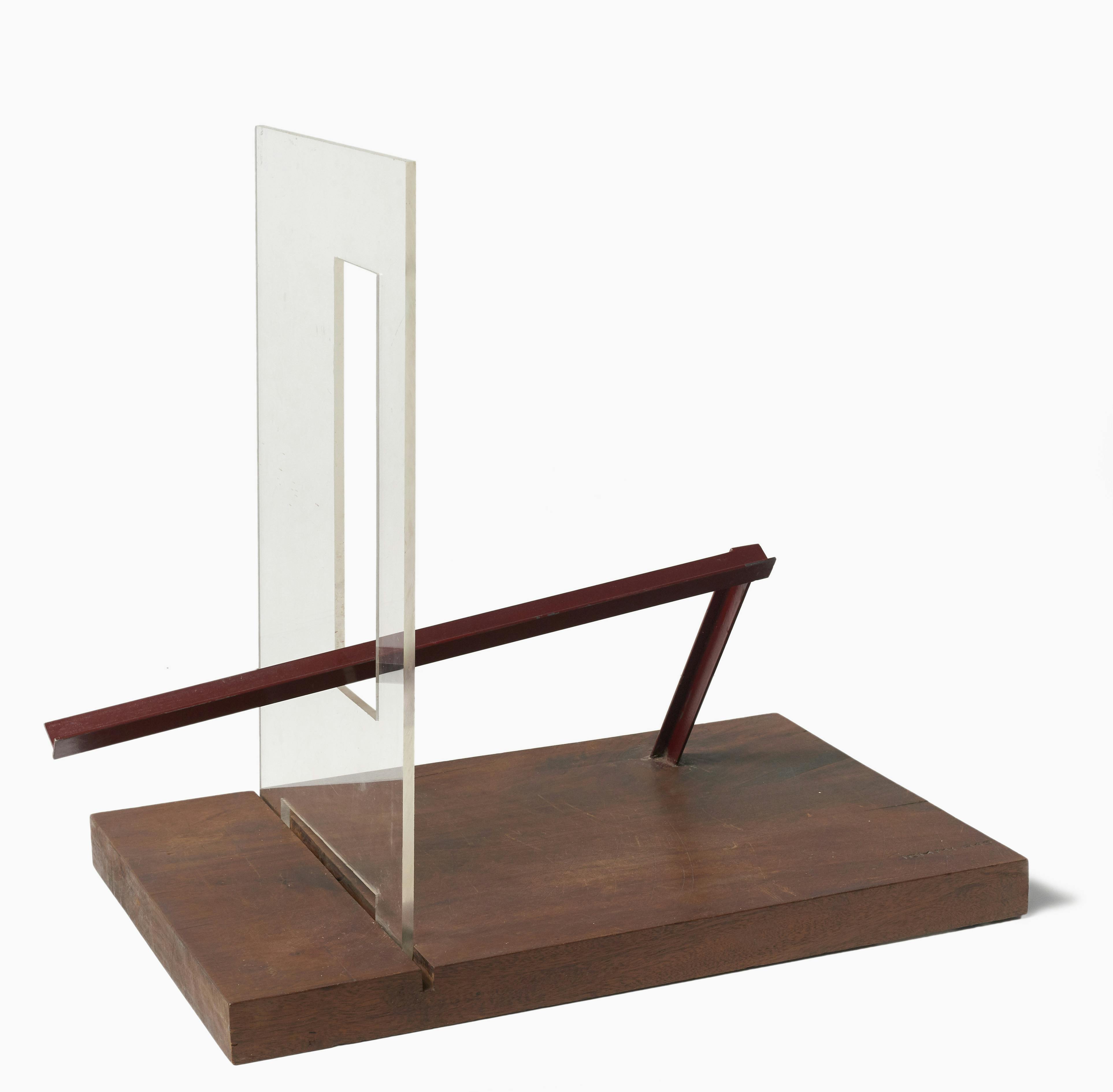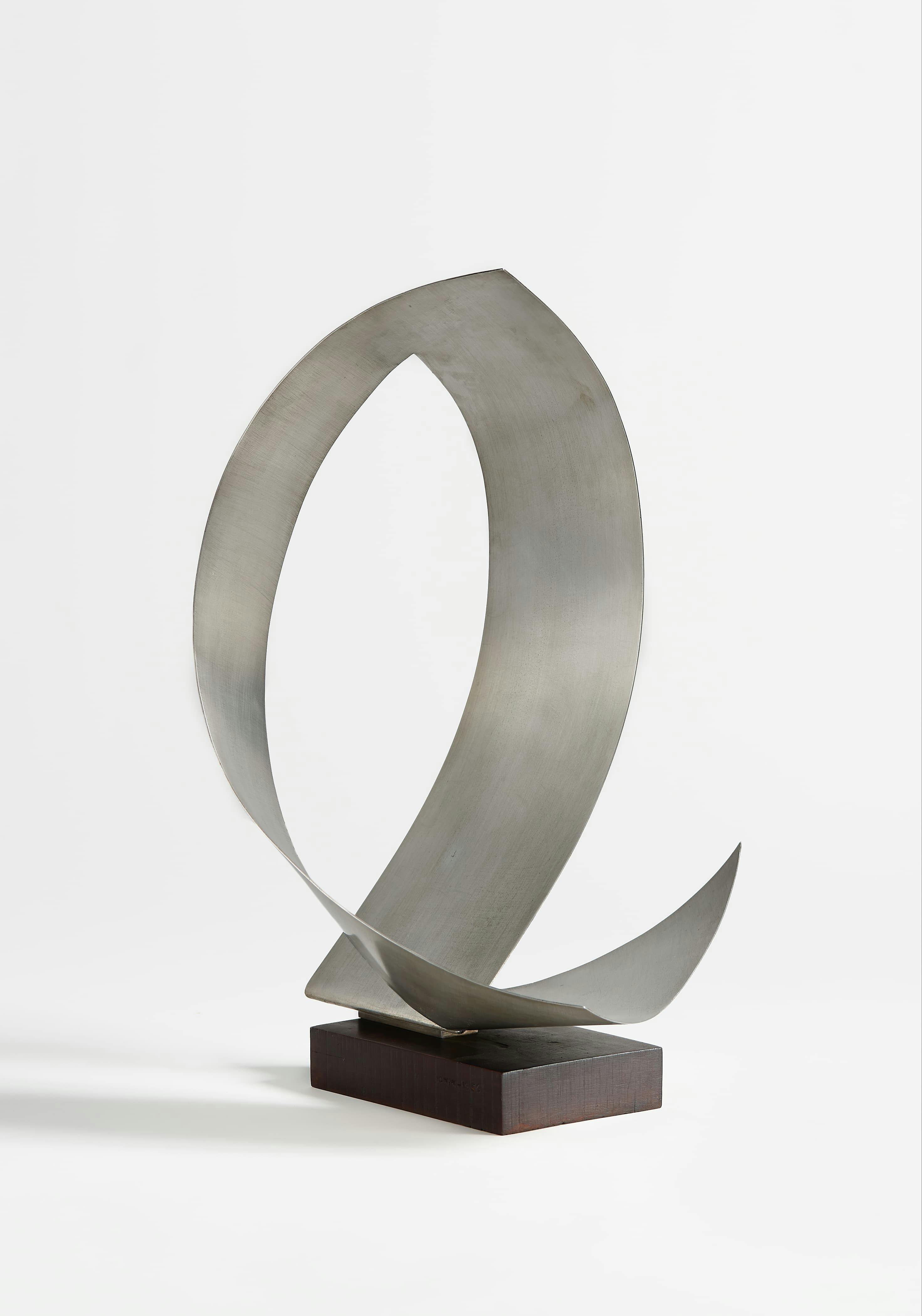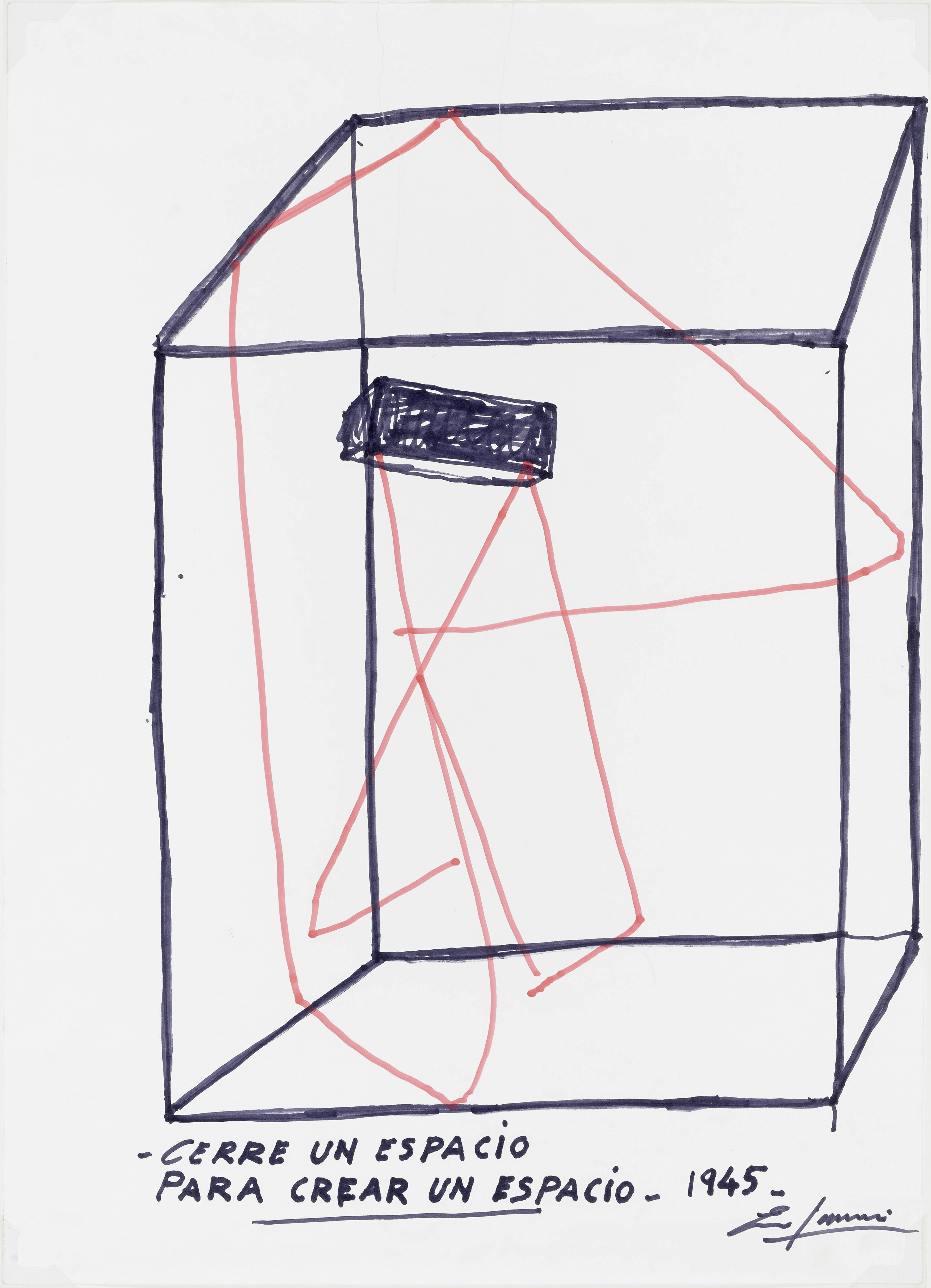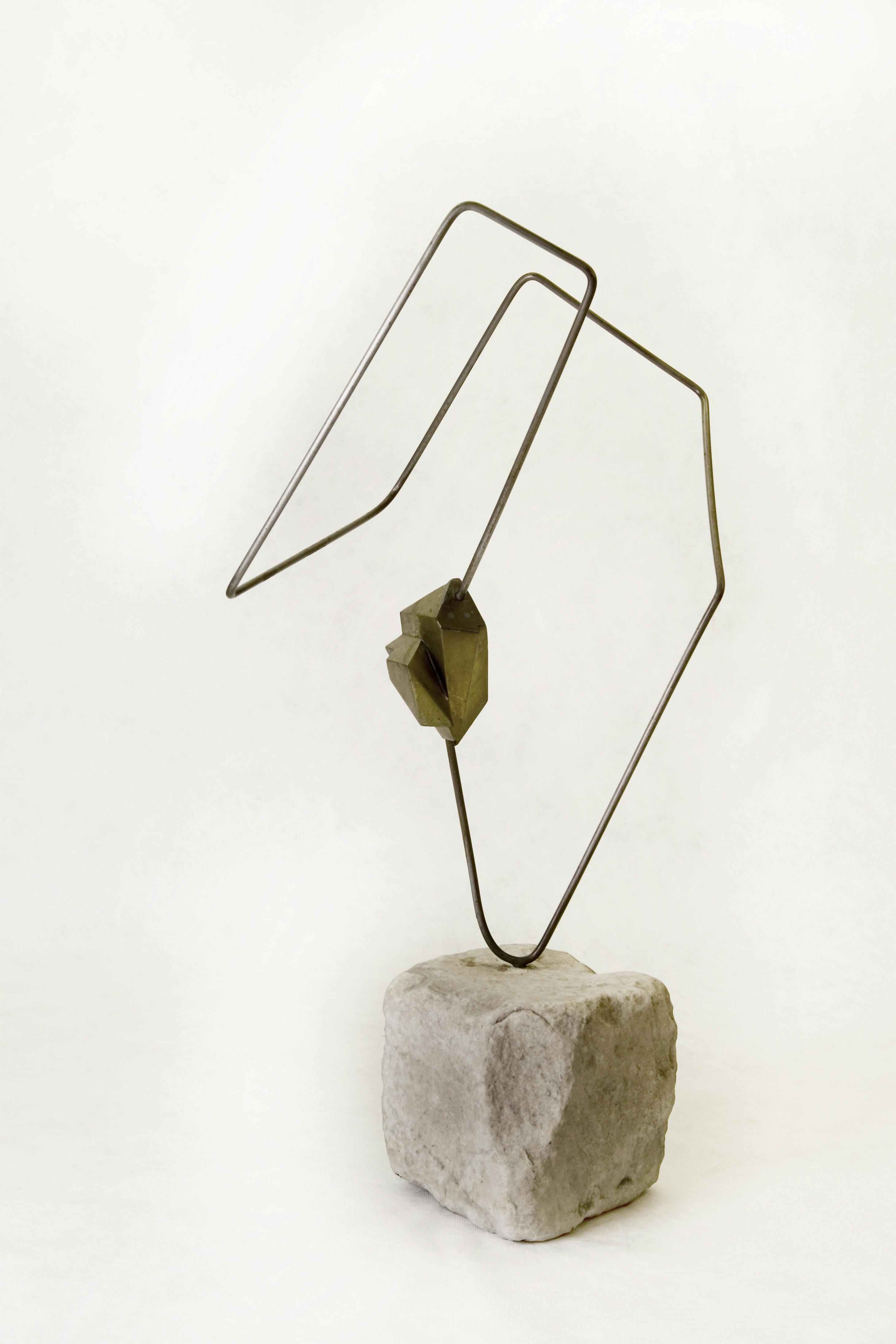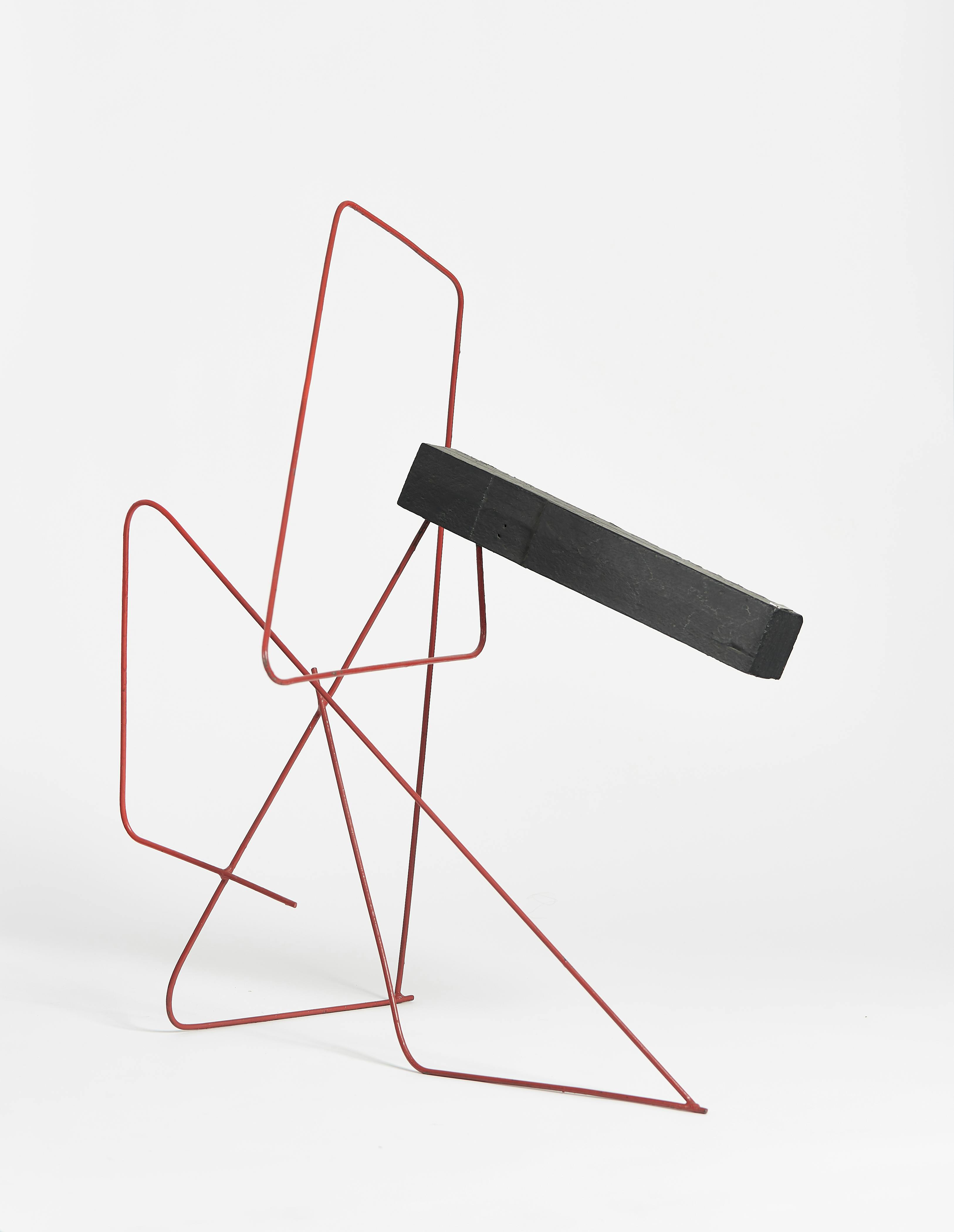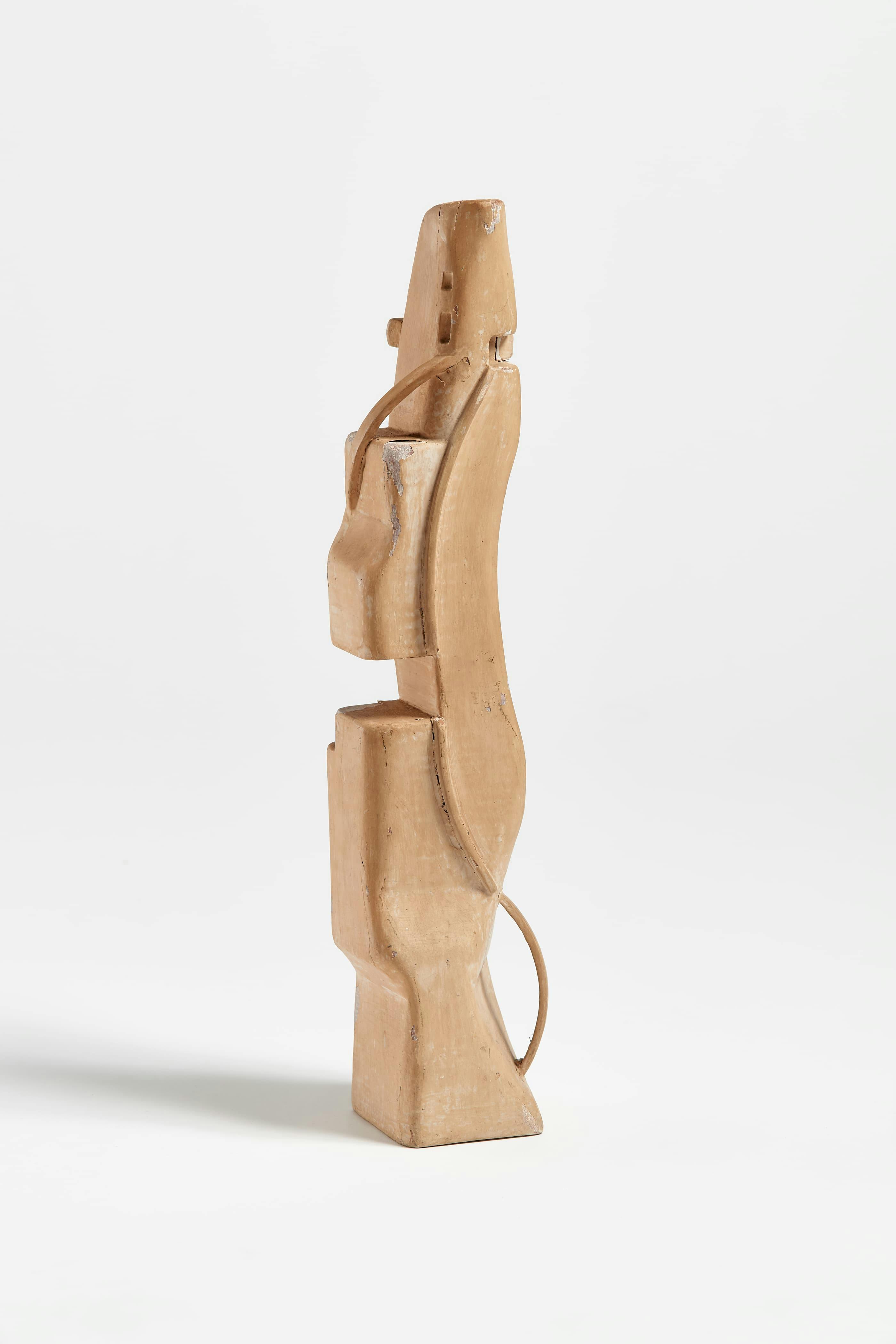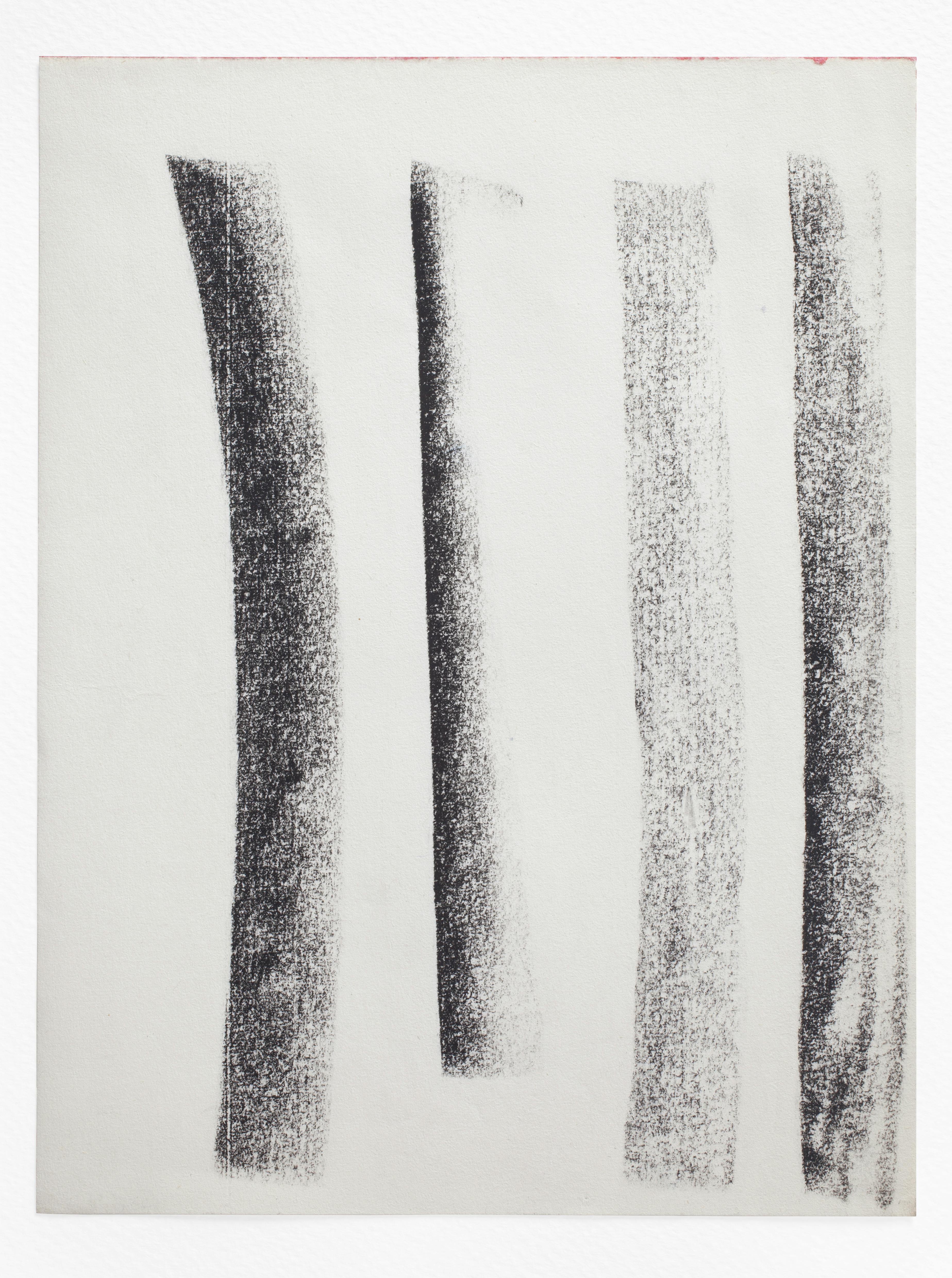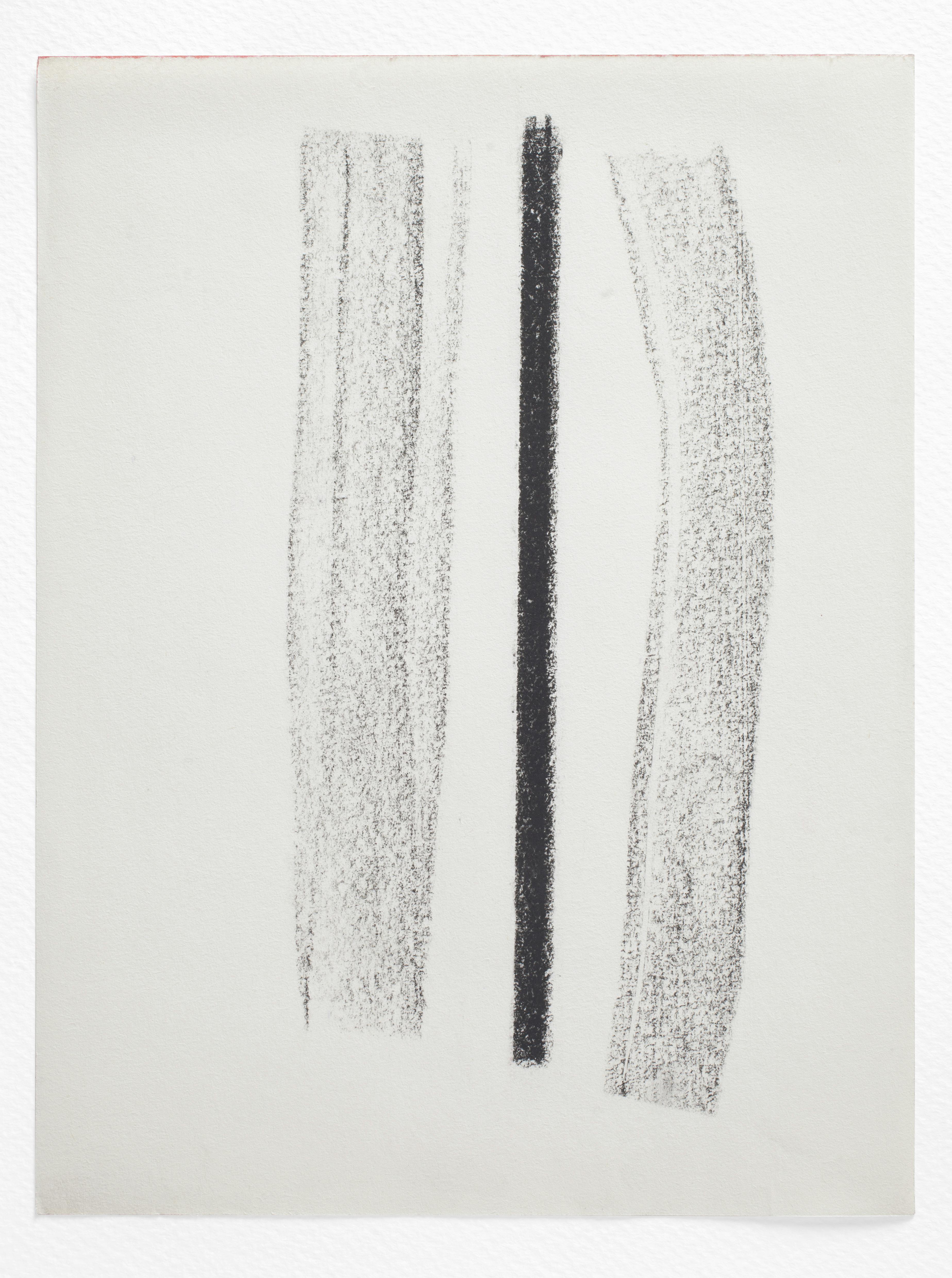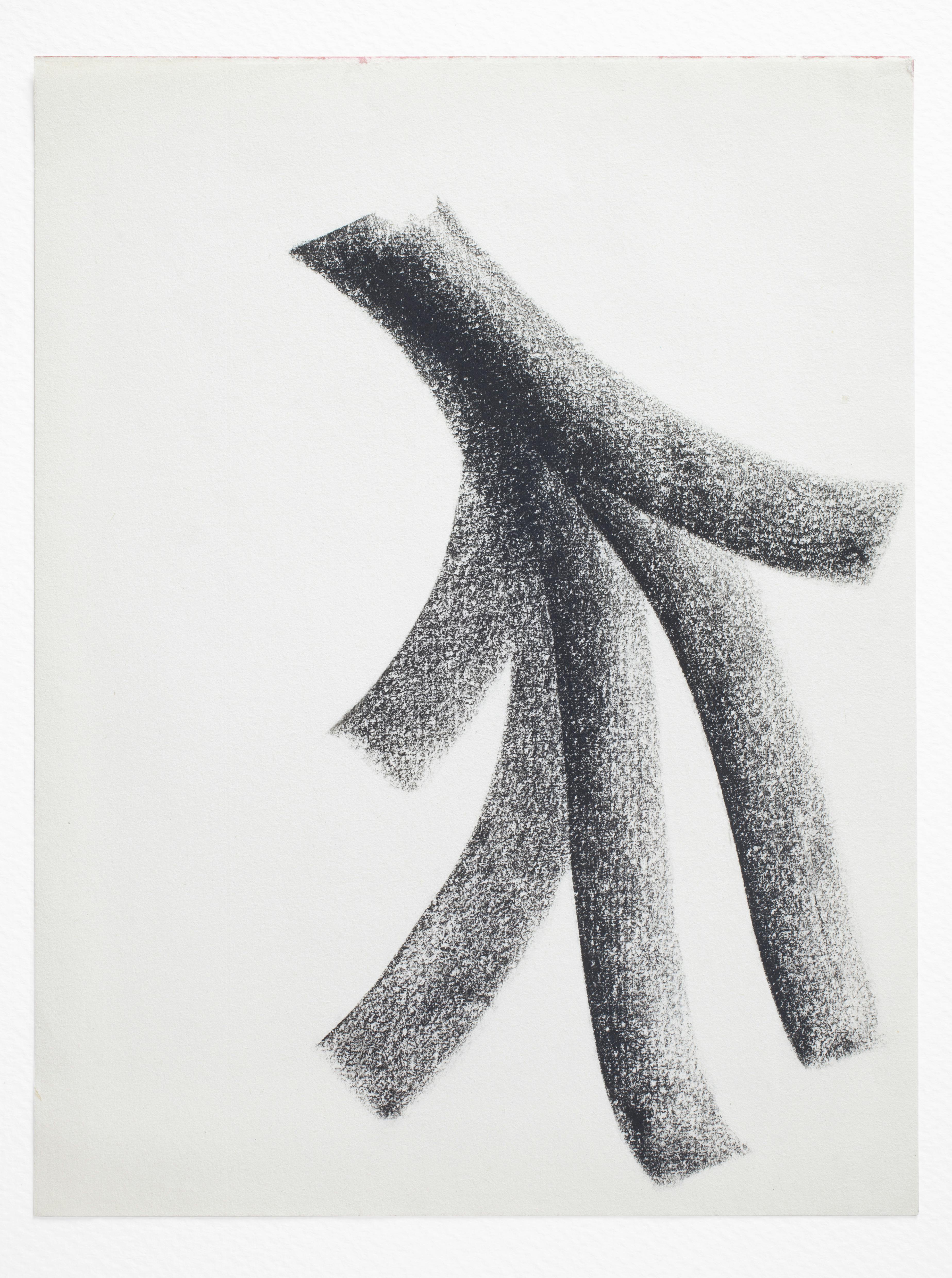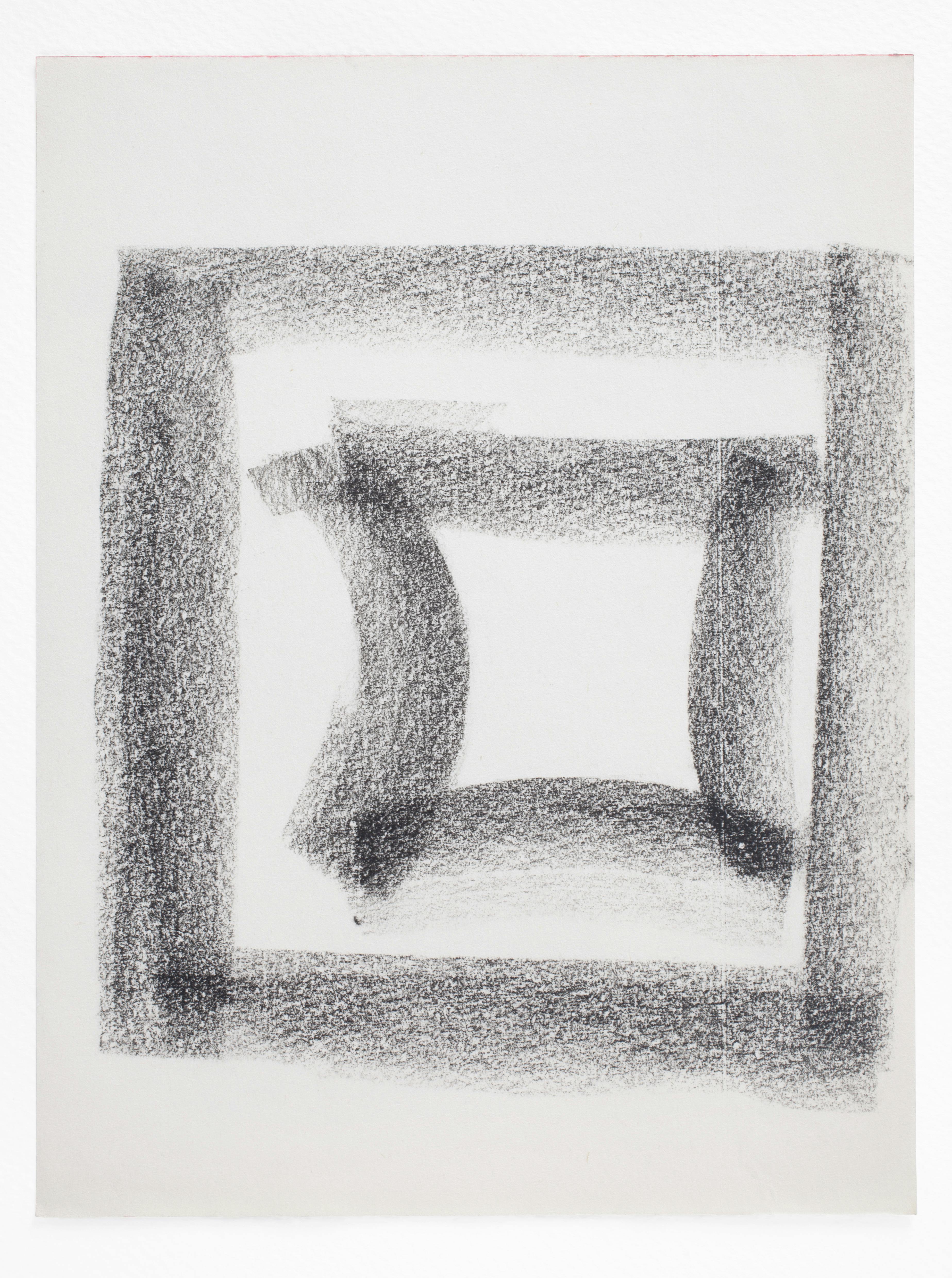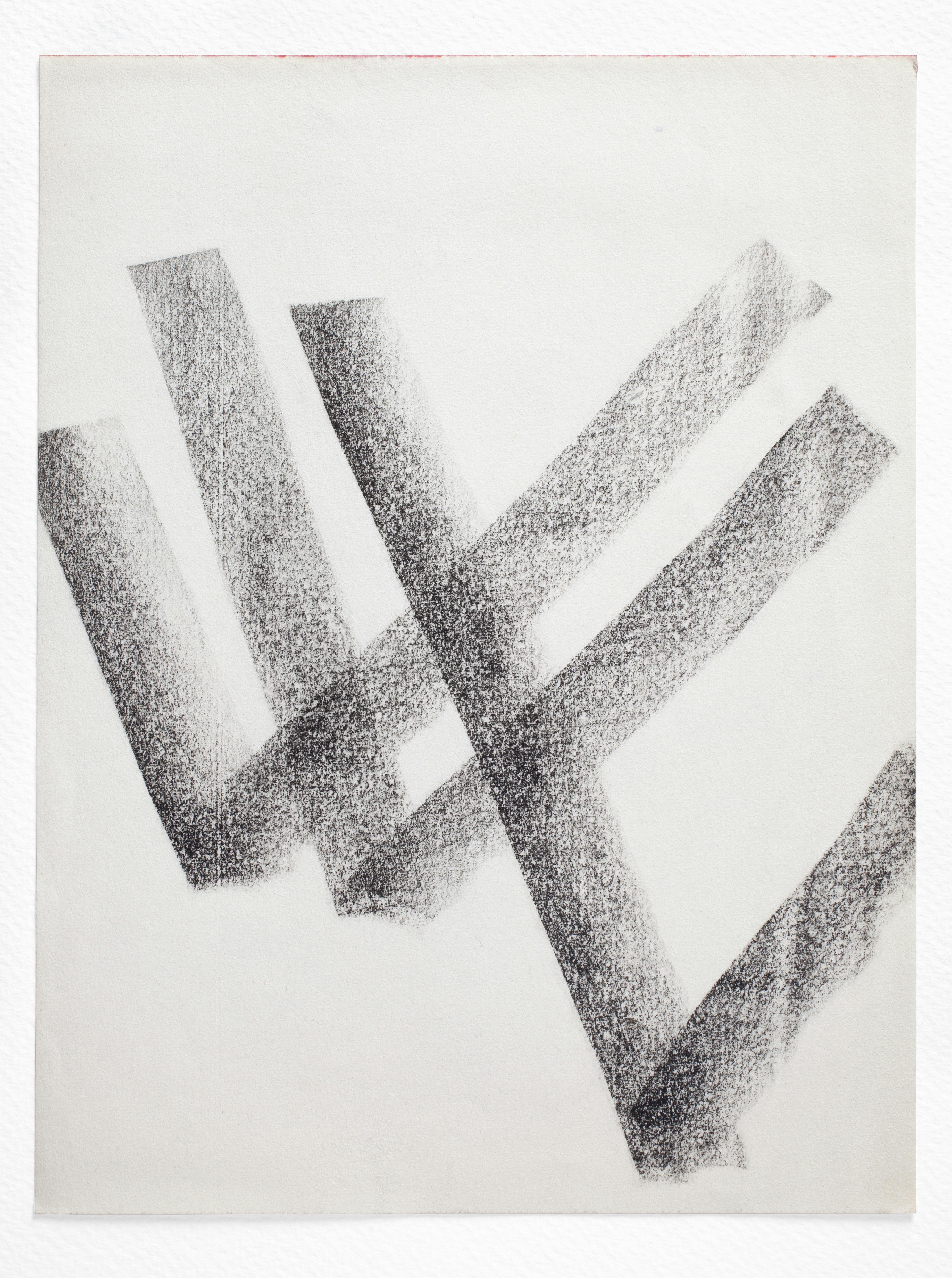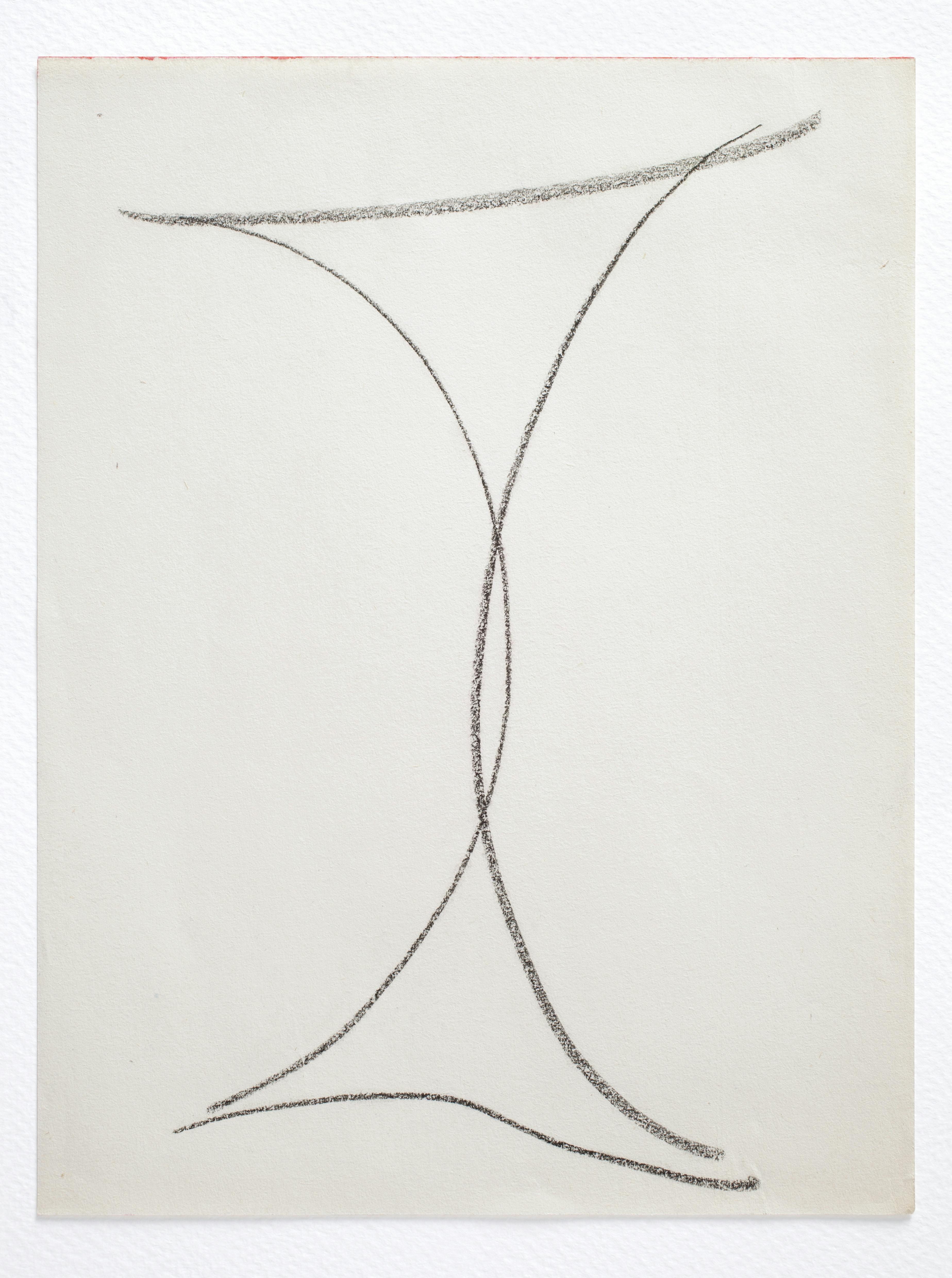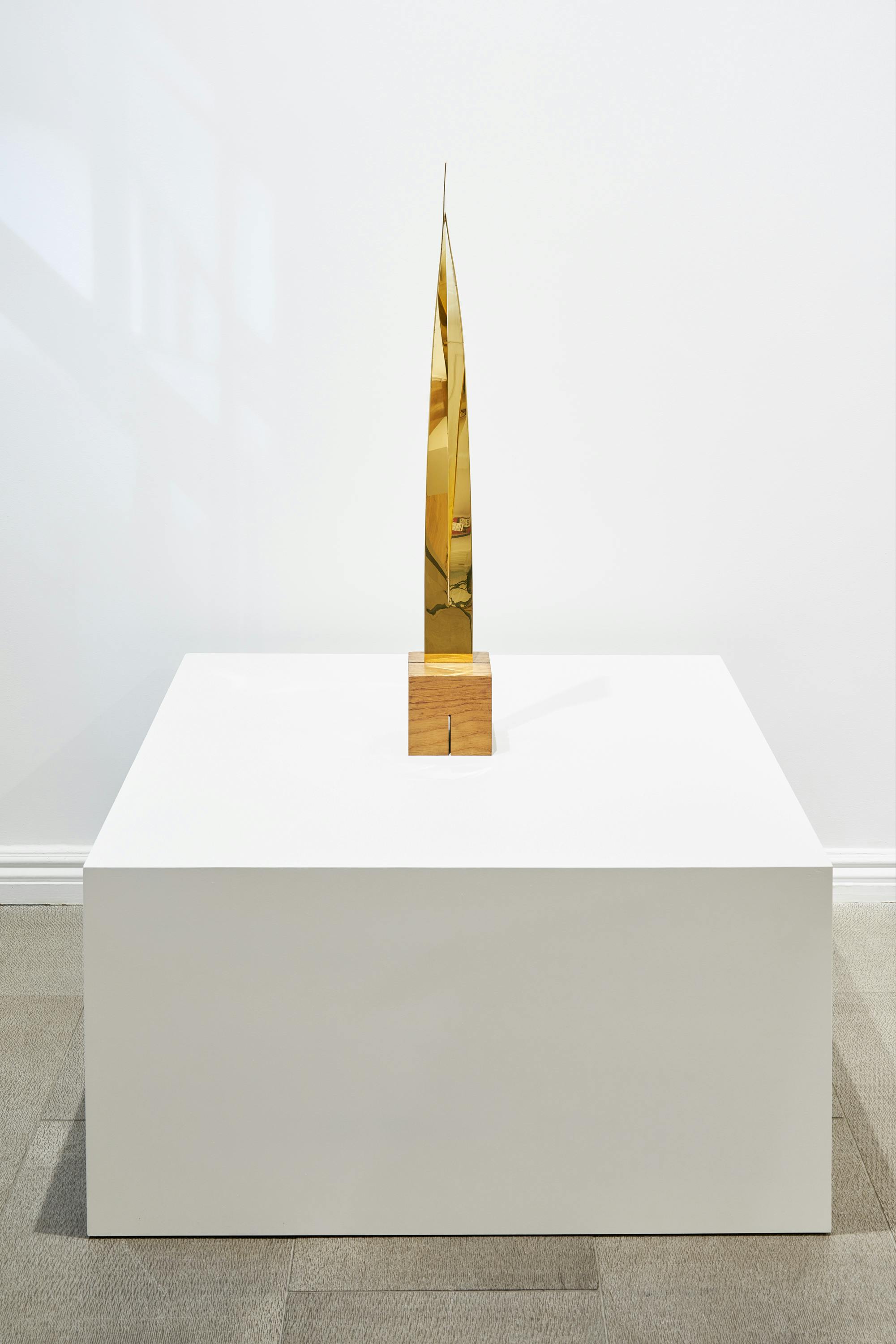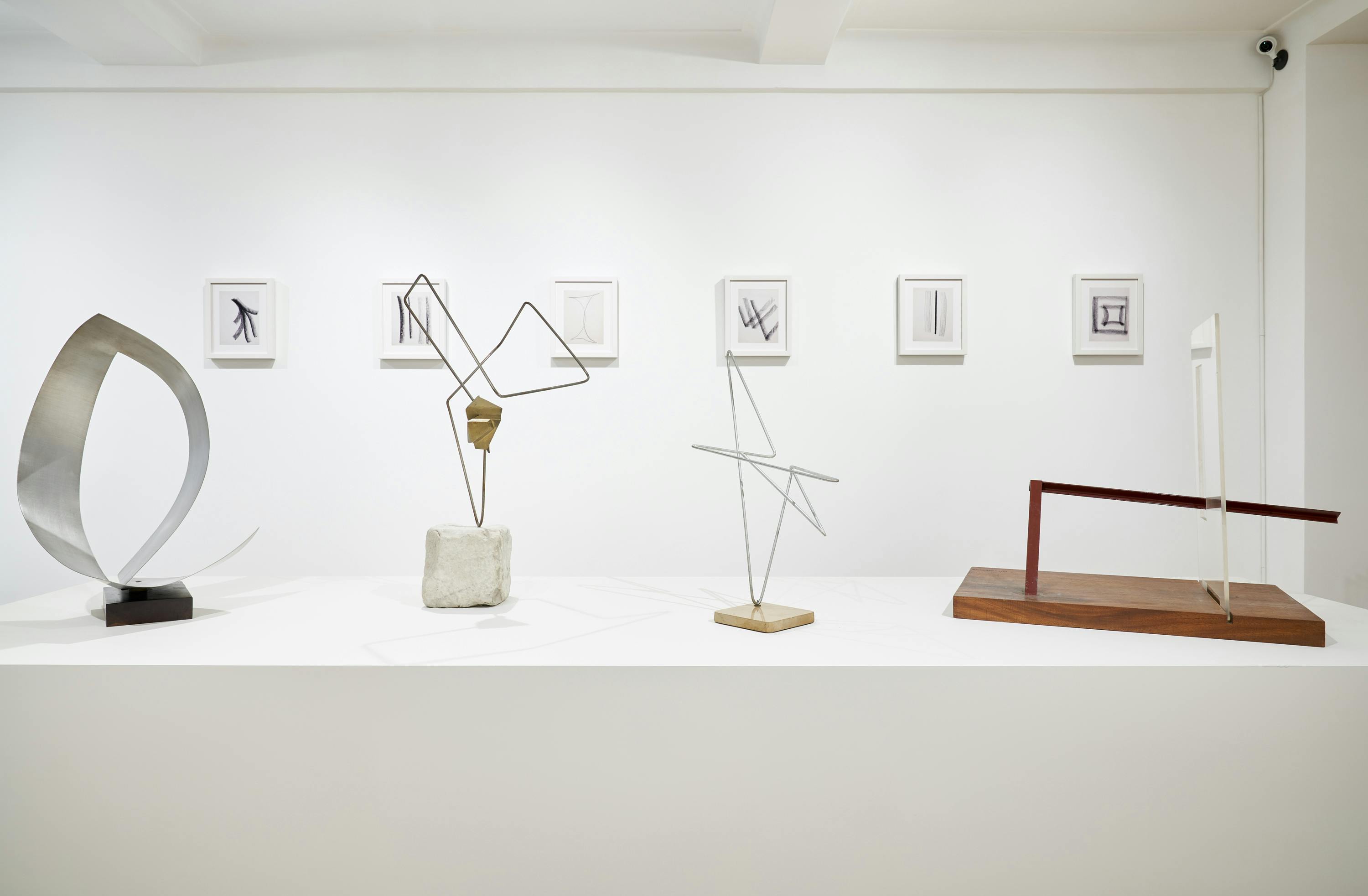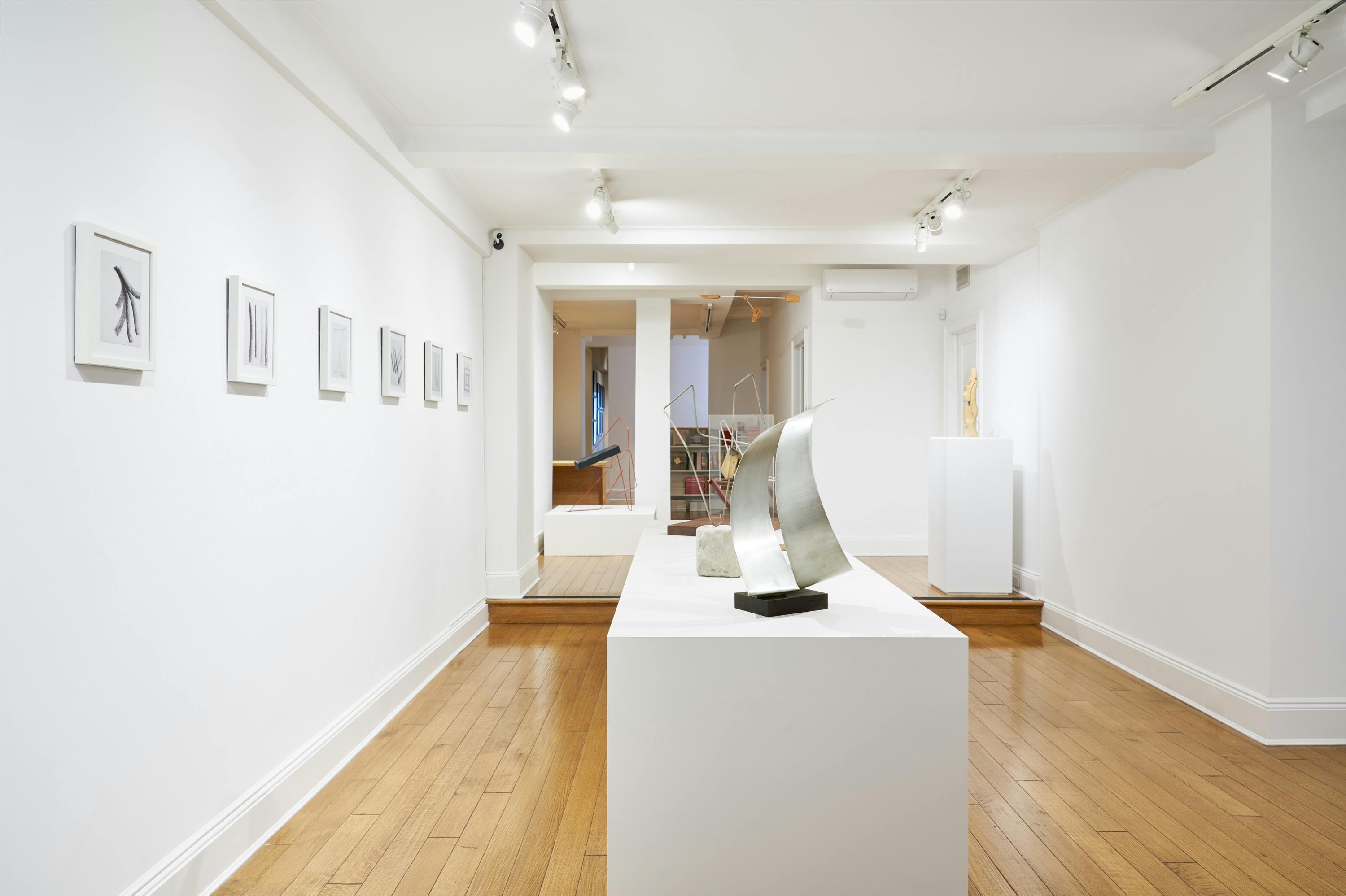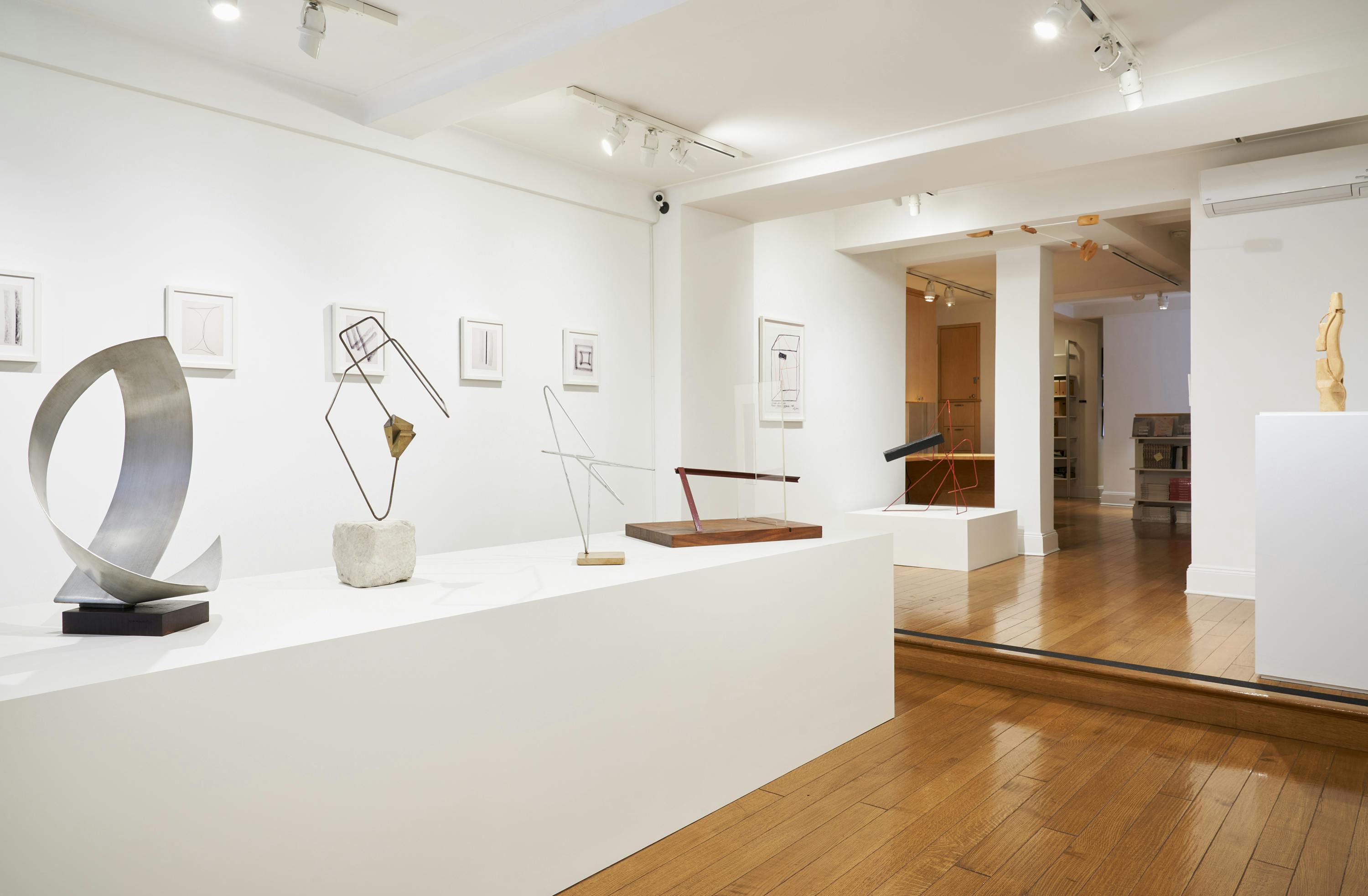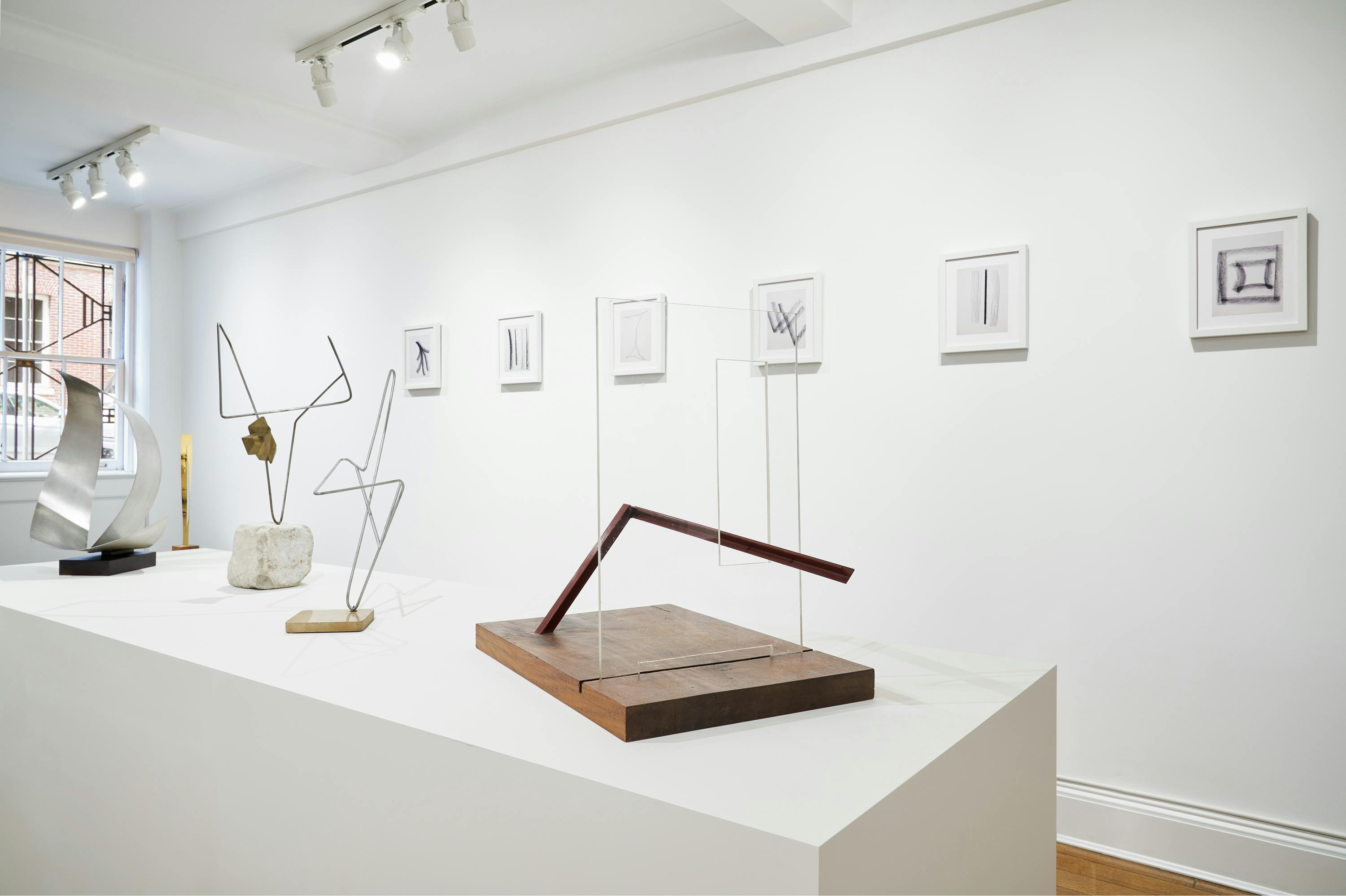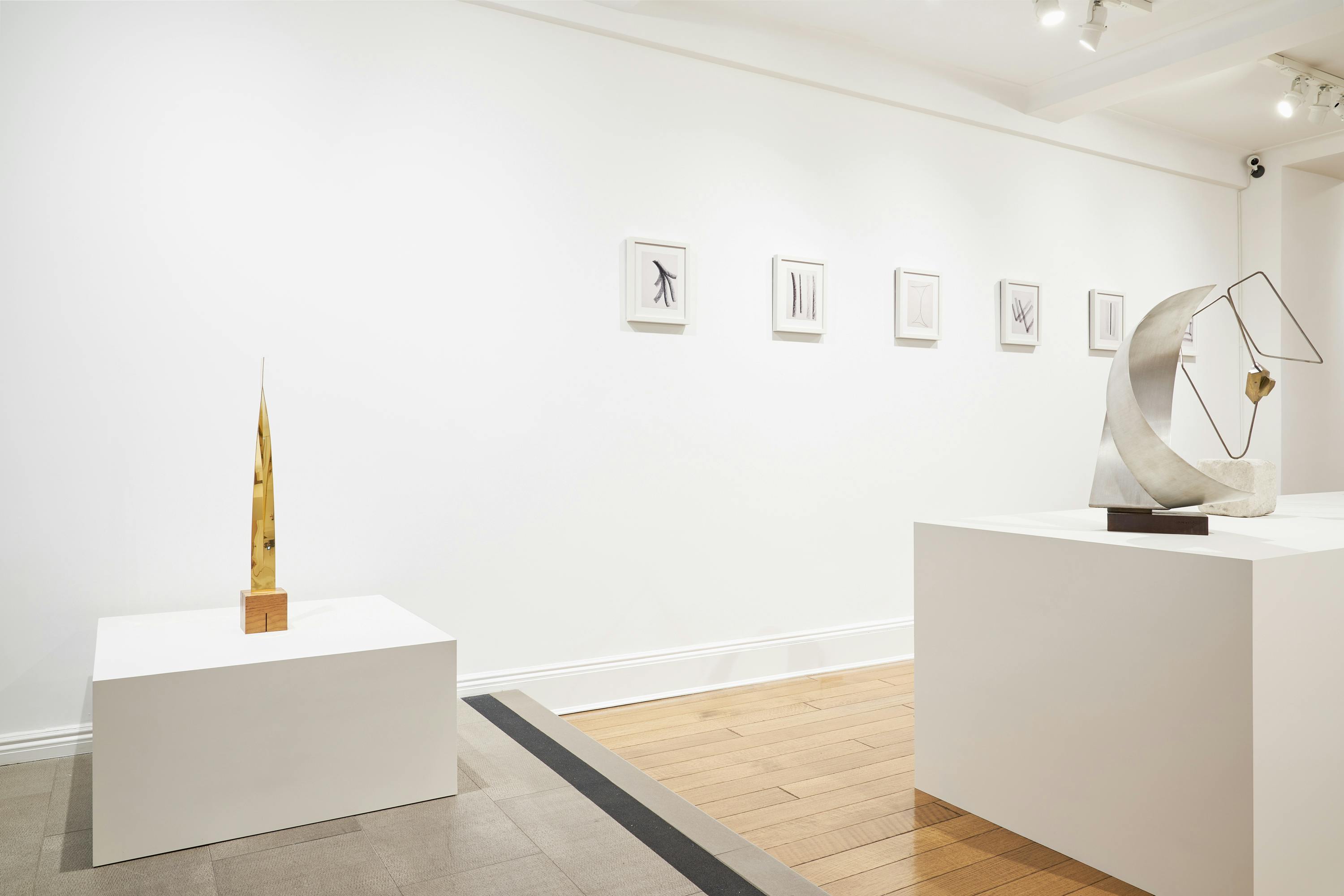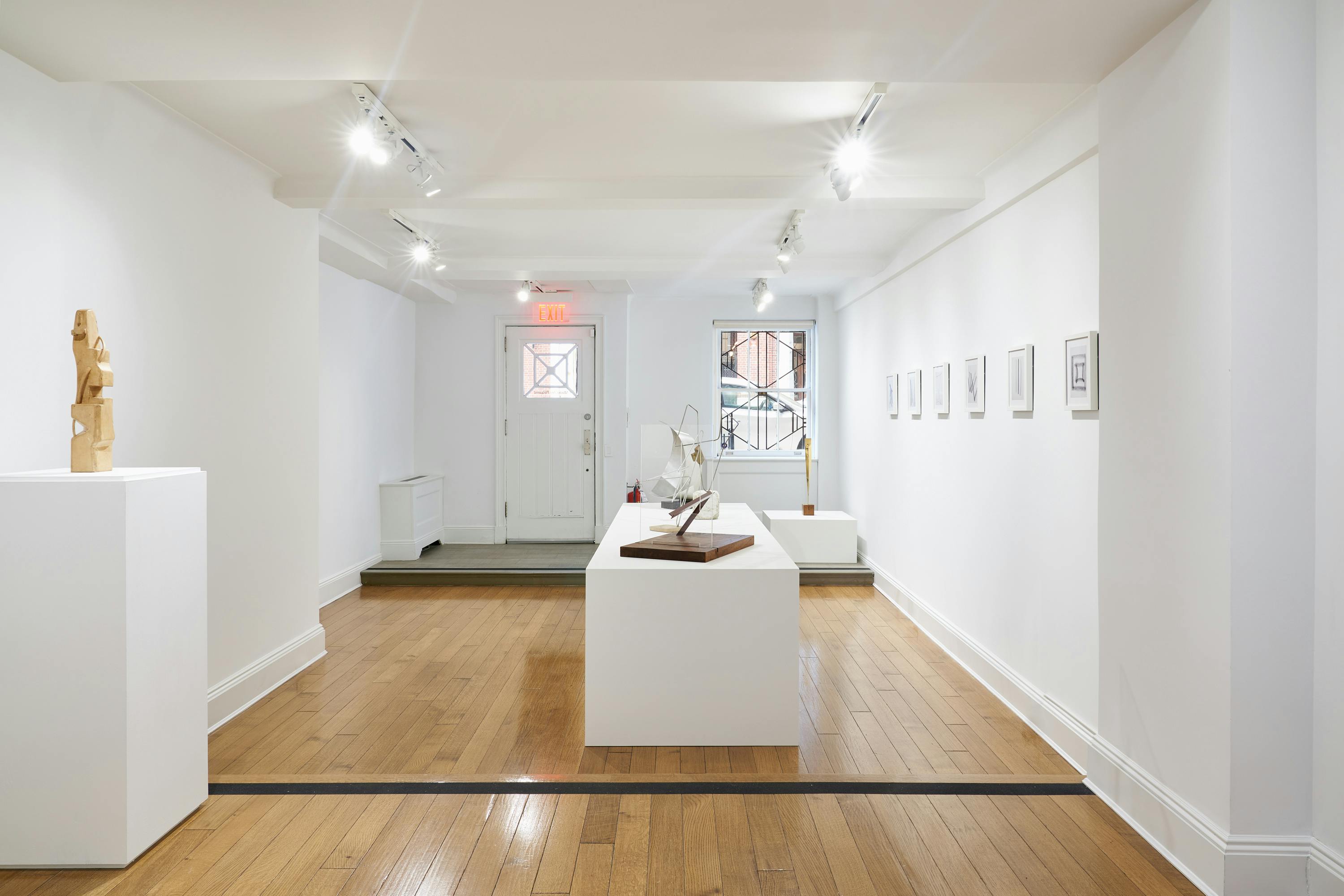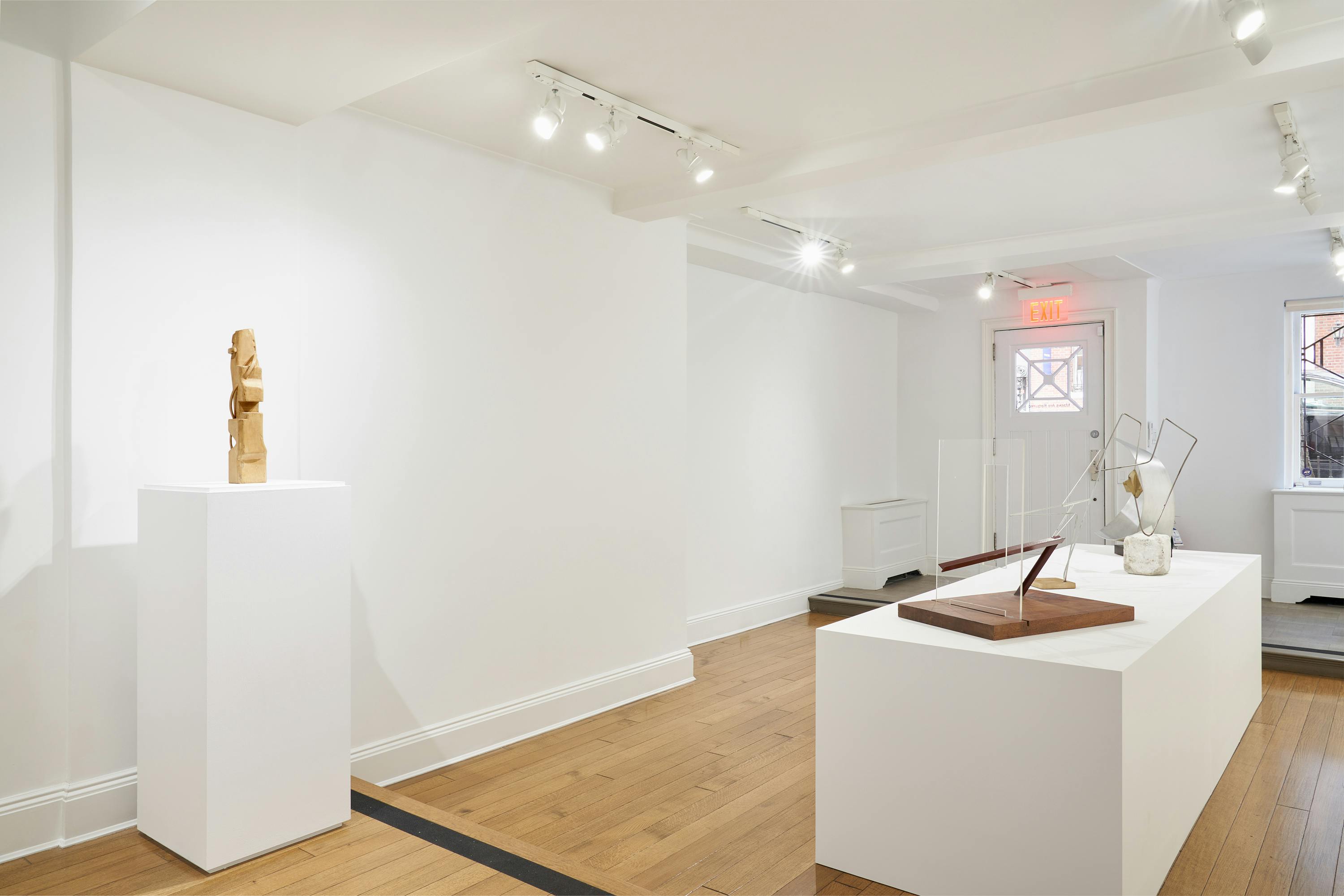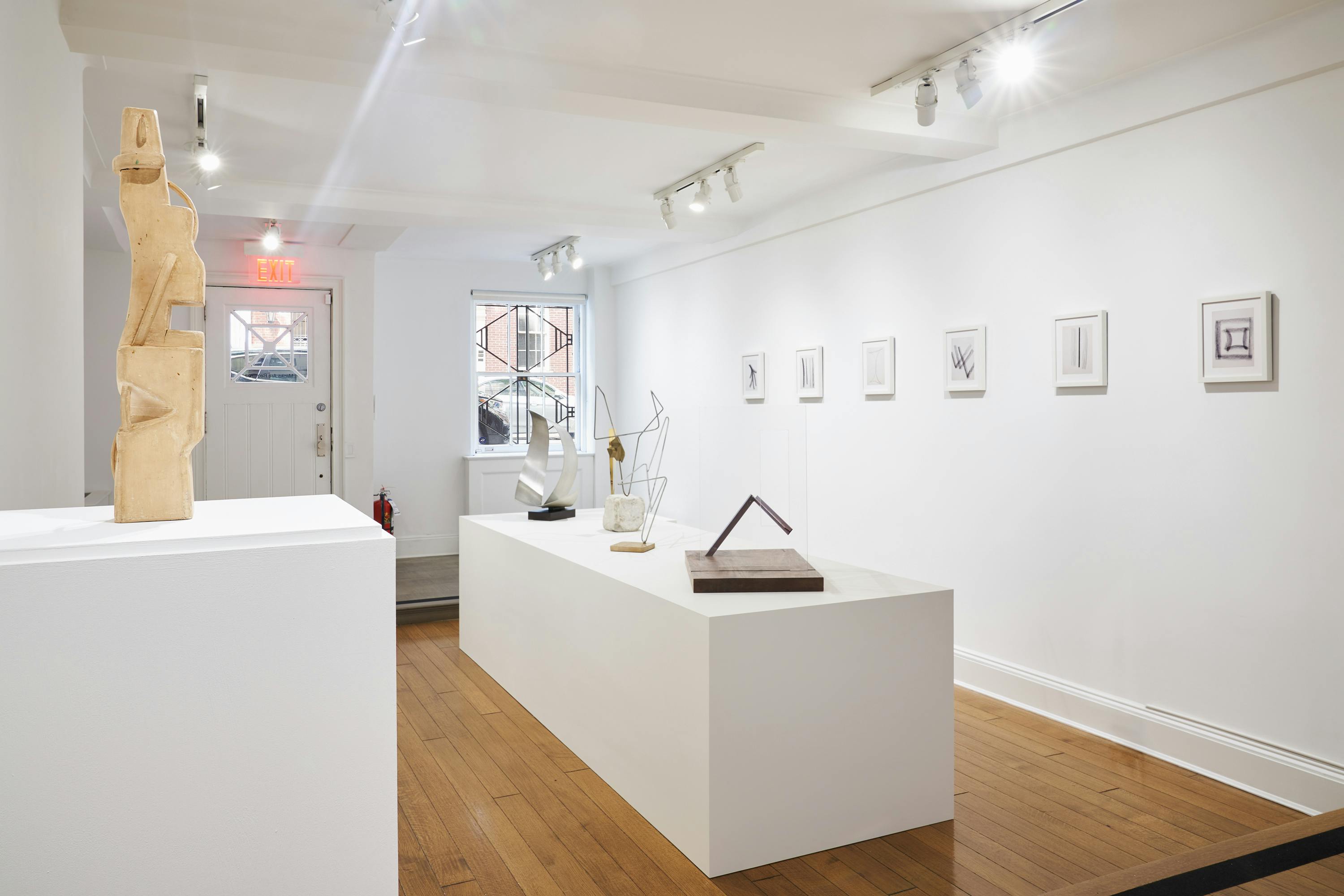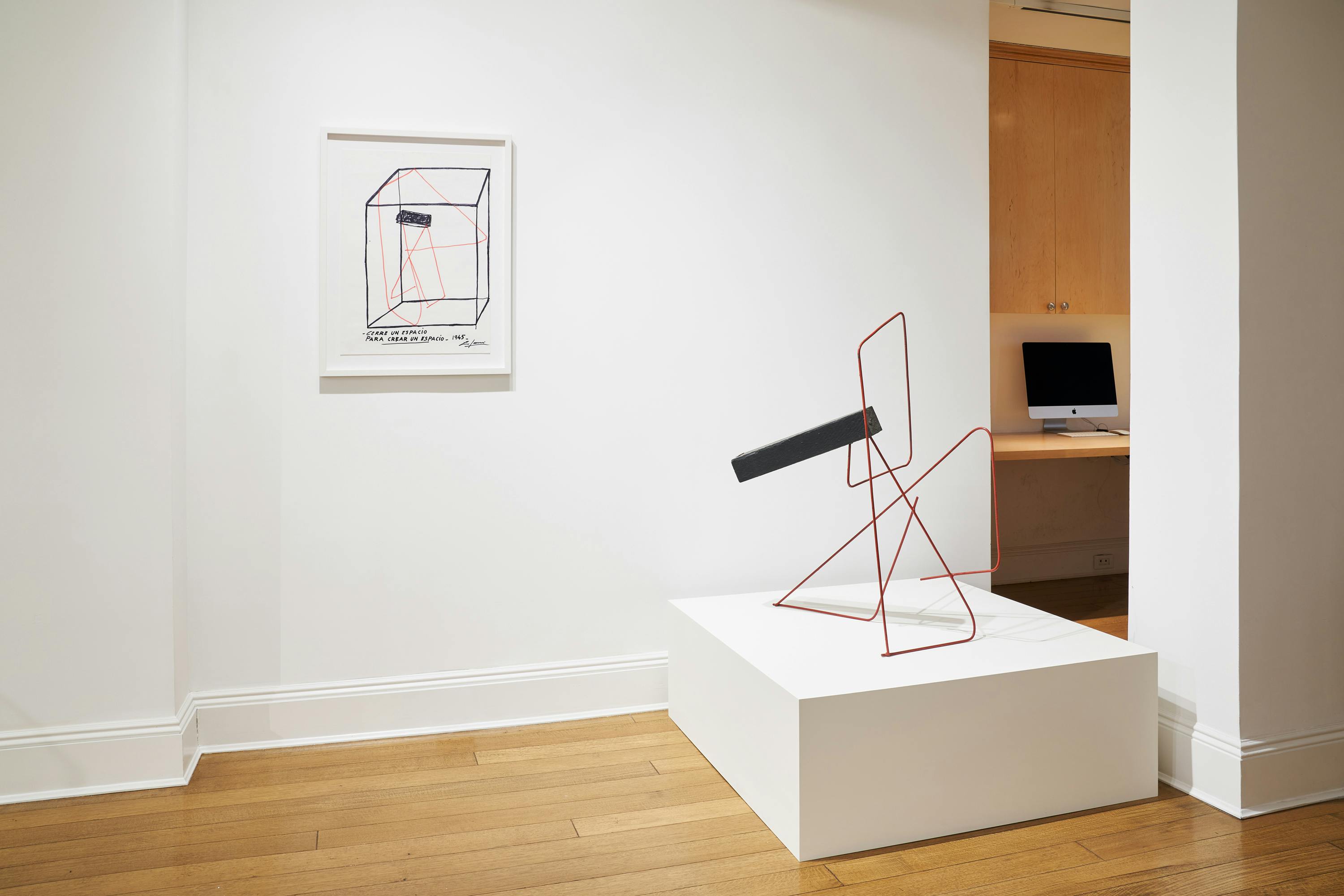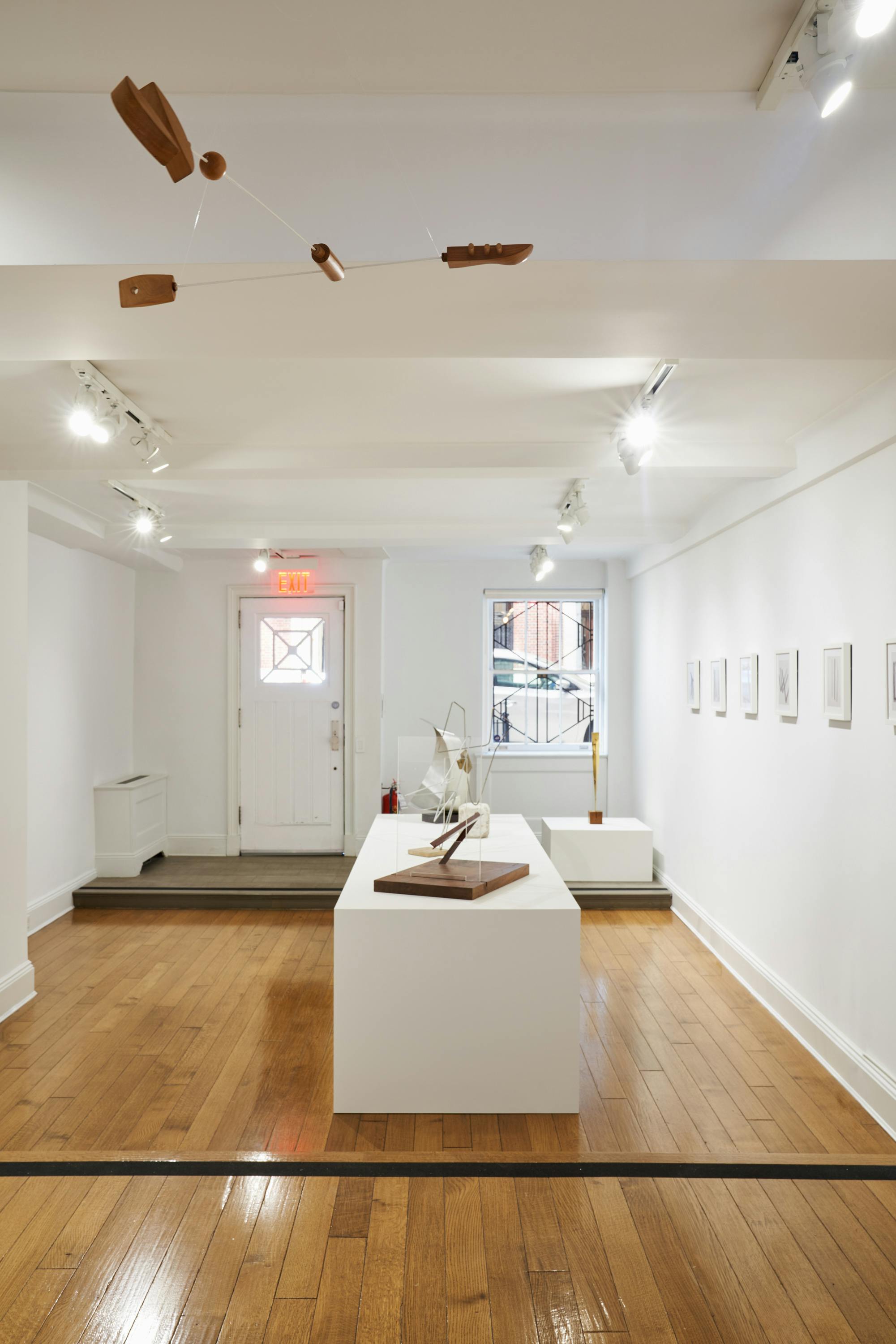The Institute for Studies on Latin American Art (ISLAA) is delighted to announce the opening of “From Surface to Space”: Max Bill and Concrete Sculpture in Buenos Aires, curated by Francesca Ferrari. The first in a new series on Latin American modernism at ISLAA, this exhibition explores concurrent experiments in Concrete sculpture amid the formative, transnational creative dialogue between the Swiss artist Max Bill and the Argentine avant-garde from 1946 to 1955. It is conceived as a complementary exhibition to Max Bill Global, curated by Fabienne Eggelhöfer with assistance from Myriam Dössegger, at the Zentrum Paul Klee in Bern, Switzerland.
“From Surface to Space” brings together sculptures by Carmelo Arden Quin (Uruguayan, 1913–2010), Max Bill (Swiss, 1908–1994), Claudio Girola (Argentine, 1923–1994), Enio Iommi (Argentine, 1926–2013), and Gyula Kosice (Argentine, 1924–2016), as well as a series of drawings by Lidy Prati (Argentine, 1921–2008). As members of the groups Asociación Arte Concreto-Invención (AACI) and Madí, the Buenos Aires–based artists Arden Quin, Girola, Iommi, Kosice, and Prati circulated, revised, and expanded Bill’s notions of concretism in Latin America. This exhibition frames Bill’s relationship to his Argentine peers as one of reciprocal impact, revealing how artists in Argentina reacted to Bill’s theories while Bill reoriented his characterization of Concrete art after encountering their work.
Taking its title from a 1951 essay in which Bill examines how artworks relate to the spaces they inhabit, the show highlights these artists’ shared aspirations to shape objects that activate their surroundings, using abstraction as a tool for animating environments. Focusing on sculpture, a medium that is less often centered in discussions of the Argentine avant-garde—which tend to privilege marcos recortados, or paintings with “broken frames”—this exhibition examines the role of sculpture in advancing artists’ determination to energize three-dimensional space. Despite their diversity of ideologies and approaches, the featured artists were united by a common, revolutionary goal: to invoke visual, tactile, and synesthetic responses in the viewer.
“From Surface to Space”: Max Bill and Concrete Sculpture in Buenos Aires is accompanied by an original publication including an essay by curator Francesca Ferrari. Physical copies are available free of charge at ISLAA and for download online.
ISLAA is open from 2 to 5 PM on Tuesday and from 2 to 7 PM on Wednesday through Friday. Proof of vaccination is required in line with New York City regulations. Guests must wear masks and adhere to all COVID-19 guidelines while on-site. Although walk-ins are allowed, visitors are encouraged to book appointments in advance through ISLAA’s online scheduler.
EXHIBITION TALKS
In conjunction with the exhibition, ISLAA is pleased to present a series of live online public programs and prerecorded lectures that will examine Bill’s broader legacy in Latin America and provide further insight into the featured artists’ work. Co-organized with the Zentrum Paul Klee, the panel International Dialogues in Experimental Design on October 14 will explore the development of European and Latin American experimental design and pedagogical strategies inspired by the Bauhaus. A second panel on October 21 will be presented as part of the Latin American Forum at the Institute of Fine Arts, New York University, a platform proudly sponsored by ISLAA since 2013. This event, titled Recasting Concretism, will consider Bill’s work in relation to concrete art in Argentina and Brazil. Alongside these live presentations, ISLAA will also publish two recorded video lectures by scholars María José Herrera and María Cristina Rossi on the work of Enio Iommi and Claudio Girola, respectively.
Exhibition Works
Installation Views
Francesca Ferrari is a PhD candidate at New York University’s Institute of Fine Arts, where she is a recipient of the Robert Lehman Fellowship for Studies in the Fine Arts. She holds an MA in art history from the University of Pennsylvania and a BA in art history and English from the Université de Lausanne. Her research focuses on twentieth-century European and Latin American art. Her dissertation, tentatively titled “Animated Geometries: Abstraction and the Body in the Work of Paul Klee, Sophie Taeuber, Joaquín Torres-García, and Alexandra Exter,” explores the convergence of geometric abstraction, the human body, and movement on a transnational scale during the 1920s. She has published in several graduate art history journals as well as inAfterimageand theYale University Art Gallery Bulletin. Ferrari is the 2020/2021 Mellon-Marron Research Consortium Fellow in the Department of Painting and Sculpture at the Museum of Modern Art.
